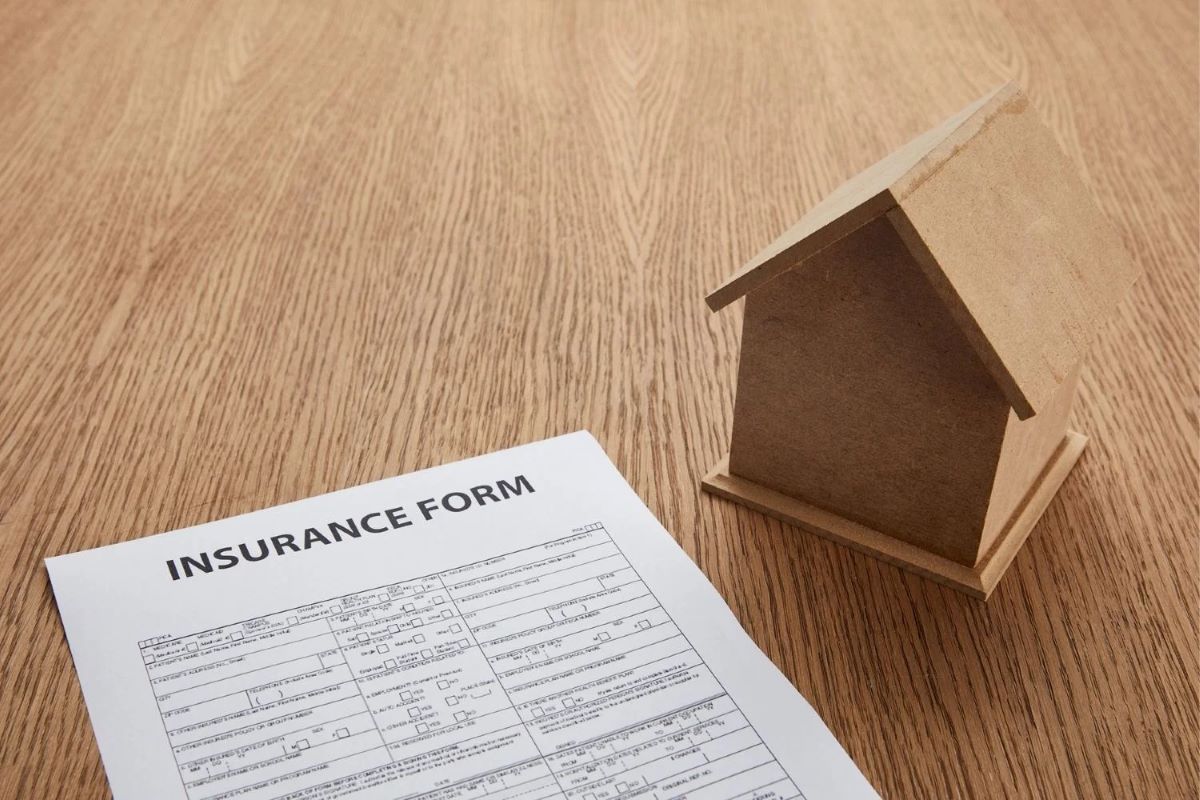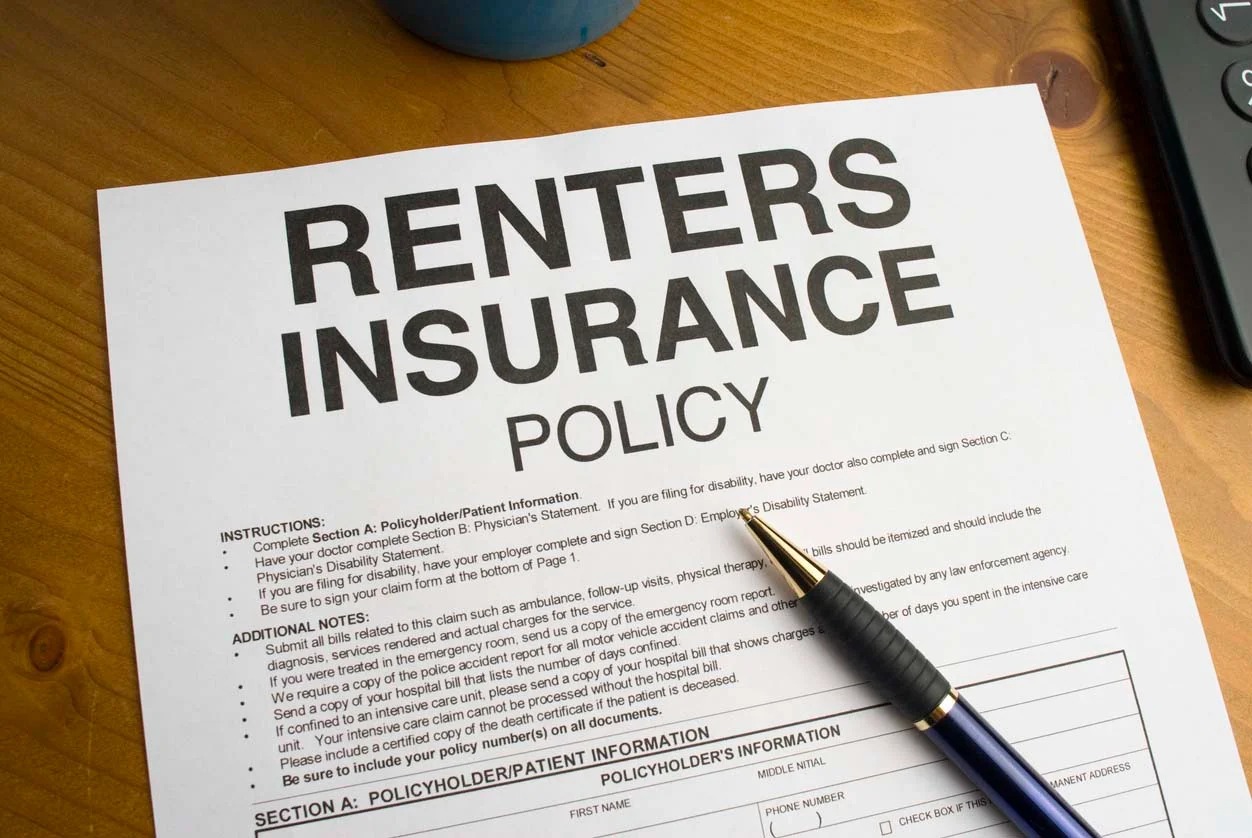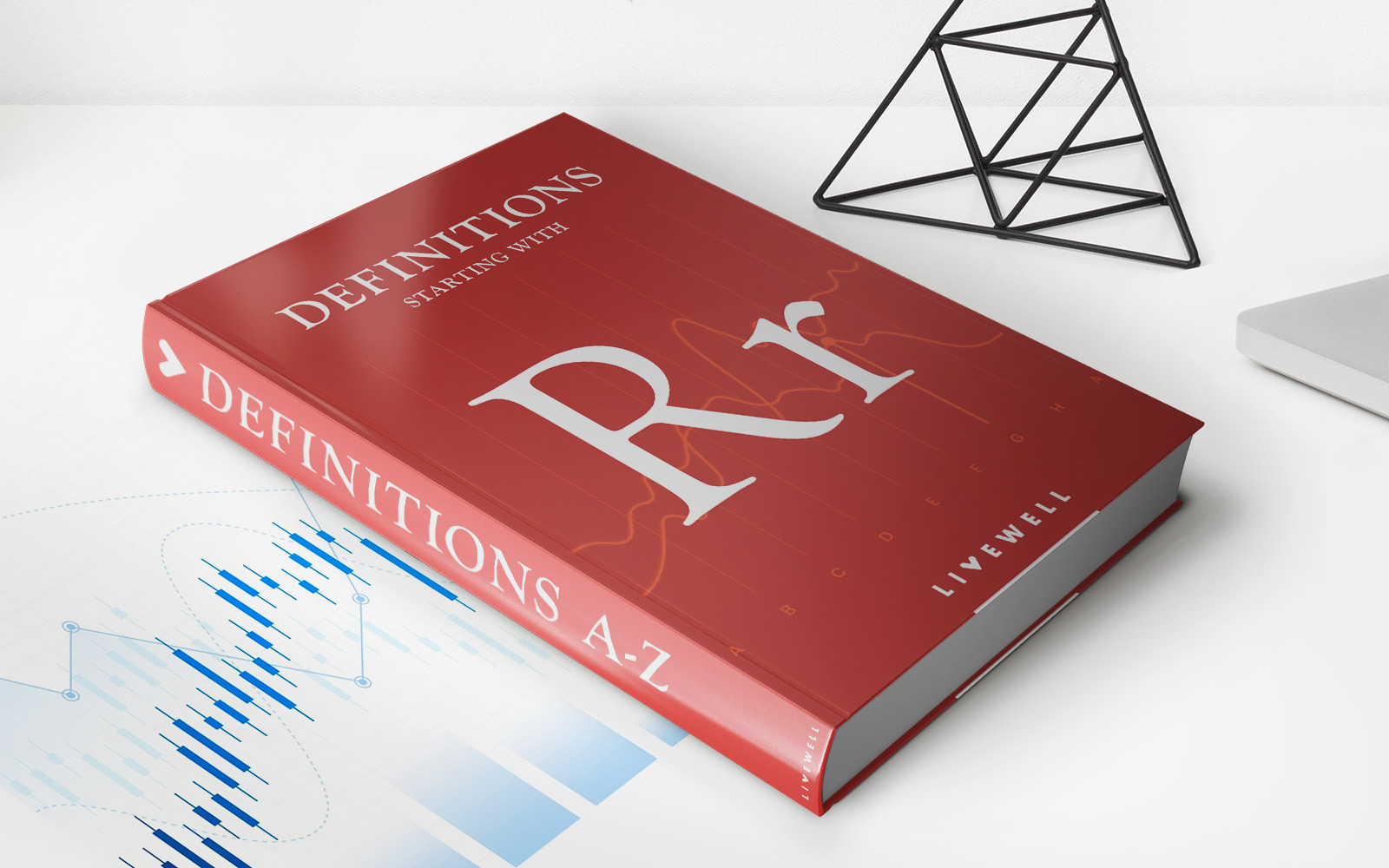Home>Finance>How Much Renters Insurance Should A Landlord Require


Finance
How Much Renters Insurance Should A Landlord Require
Published: November 6, 2023
Find out how much renters insurance a landlord should require to protect their financial investment and mitigate risk. Explore the importance of insurance coverage in the realm of finance.
(Many of the links in this article redirect to a specific reviewed product. Your purchase of these products through affiliate links helps to generate commission for LiveWell, at no extra cost. Learn more)
Table of Contents
- Introduction
- Understanding Renters Insurance
- Importance of Renters Insurance for Landlords
- Factors to Consider in Determining Required Amount
- Local Rental Market Analysis
- Common Insurance Coverage Options
- Setting Minimum Insurance Requirements
- Communicating Insurance Requirements to Tenants
- Proof of Insurance and Documentation
- Reviewing Insurance Policies Regularly
- Conclusion
Introduction
As a landlord, it’s crucial to protect your investment and minimize financial risks. One way to achieve this is by requiring renters insurance from your tenants. Renters insurance provides liability coverage and protects tenants’ personal belongings in case of accidents, theft, or damages.
In this article, we will explore the importance of renters insurance for landlords and provide insights into determining the appropriate amount of coverage to require. We will also discuss the communication process with tenants and the necessary documentation to ensure compliance.
Understanding the basics of renters insurance is essential for landlords. While it may not be legally required in some jurisdictions, it is highly recommended as it provides valuable protection for both tenants and property owners.
Renting a property comes with inherent risks such as accidents, natural disasters, or unforeseen events. Without renters insurance, tenants may face financial difficulties in replacing their belongings or covering liability claims. This could potentially lead to disputes and legal issues between tenants and landlords.
As a landlord, requiring renters insurance can help mitigate potential risks and provide peace of mind. It ensures that tenants have financial protection and assume responsibility for their personal belongings and liability. By setting clear guidelines and minimum insurance requirements, you can protect your investment and property while also adding value to your rental business.
In the following sections, we will delve deeper into the importance of renters insurance for landlords and discuss factors to consider when determining the required amount. We will also provide practical tips on communication, documentation, and regular policy reviews.
Understanding Renters Insurance
Renters insurance is a type of insurance policy designed specifically for tenants who are renting a property. It provides coverage for personal belongings, liability protection, and additional living expenses in case of a covered loss.
Personal Belongings Coverage: Renters insurance protects tenants’ personal belongings such as furniture, electronics, clothing, and appliances against perils like theft, fire, vandalism, or damage caused by water leaks. In the event of a covered loss, the insurance company will compensate the tenant for the value of the damaged or stolen items, up to the policy’s limits.
Liability Protection: Renters insurance also includes liability coverage. This protects tenants from financial responsibility in case of accidental injuries or property damage to others. For example, if a tenant’s guest trips and falls in the rental unit, sustaining injuries, the liability portion of the renters insurance policy can help cover medical expenses and potential legal fees in the event of a lawsuit.
Additional Living Expenses: In situations where the rental property becomes uninhabitable due to a covered loss, renters insurance can provide coverage for additional living expenses. This means that if the tenant is temporarily displaced and needs to stay in a hotel or rent an alternative accommodation, the insurance policy can cover these costs.
It’s important for both tenants and landlords to understand that renters insurance typically does not cover damages to the structure of the rental property itself. This is the responsibility of the landlord, who should have their own insurance policy specifically for the property.
It’s worth noting that renters insurance policies may have different coverage limits and deductibles, so tenants should carefully review the terms and conditions outlined in their policy. Additionally, tenants may consider adding additional coverage, such as for expensive jewelry or artwork, through policy endorsements or purchasing separate riders.
By understanding the key components of renters insurance, landlords can better communicate the importance of having this coverage to their tenants. In the next section, we will explore why renters insurance is essential for landlords.
Importance of Renters Insurance for Landlords
While renters insurance primarily benefits tenants, it also holds significant importance for landlords. Requiring tenants to have renters insurance can offer several advantages and help protect landlords’ interests and investments.
1. Protection against Liability Claims: Accidents can happen, and if a tenant accidentally causes damage to the rental property or injures someone, they could potentially hold the landlord responsible. However, when tenants have renters insurance with liability coverage, it helps shift the financial responsibility away from the landlord and onto the tenant’s insurance policy. This can help protect landlords from costly legal battles and potential damages.
2. Minimizing Financial Risks: In the event of a covered loss, such as a fire or water damage, tenants with renters insurance can financially recover and replace their damaged belongings. This can prevent them from seeking financial assistance from the landlord, reducing the likelihood of disputes between the two parties. By requiring renters insurance, landlords can minimize their financial risks and avoid potential conflicts with tenants over property damage claims.
3. Added Security and Peace of Mind: Requiring renters insurance provides an additional layer of security for both tenants and landlords. Tenants can rest assured that their personal belongings are protected in the event of unexpected events, while landlords can have peace of mind knowing that their tenants have a financial safety net to cover any losses. This helps create a more stable and harmonious landlord-tenant relationship.
4. Promoting Responsible Tenancy: Requiring renters insurance demonstrates that landlords prioritize responsible tenancy. It sets a standard for tenants to take responsibility for their personal belongings and potential liability risks. Additionally, tenants with insurance are more likely to be proactive in taking precautions to prevent accidents and damages, reducing the likelihood of property-related issues.
5. Potential Premium Reductions: Some insurance providers offer discounts to tenants who live in properties with certain safety features, such as smoke detectors, fire extinguishers, or security systems. By encouraging tenants to have renters insurance, landlords can potentially create an incentive for them to invest in such safety measures, which can further reduce the risk of incidents and insurance claims.
Overall, requiring renters insurance is a proactive measure that landlords can take to protect their investment and interests. It promotes responsible tenancy, minimizes financial risks, and enhances the overall stability of the landlord-tenant relationship. In the next section, we will discuss the factors landlords should consider when determining the required amount of renters insurance.
Factors to Consider in Determining Required Amount
When determining the required amount of renters insurance for tenants, landlords should consider several factors to ensure adequate coverage. These factors can help landlords assess the potential risks and liabilities associated with their rental property.
1. Property Value: Consider the value of the rental property and the potential cost of repairs or replacement in case of damage. This will give you an idea of the minimum amount of coverage needed to ensure tenants can recover financially in the event of a covered loss.
2. Local Regulations: Research any local regulations or legal requirements related to renters insurance. Some jurisdictions may have specific guidelines or minimum coverage limits that landlords must adhere to.
3. Liability Risks: Evaluate the potential liability risks associated with the rental property. Consider factors such as the presence of swimming pools, trampolines, or other high-risk amenities. Determine the appropriate level of liability coverage that tenants should carry to protect both parties from potential claims.
4. Tenant Profile: Assess the tenant profile and the potential risks they may bring. For example, if you have tenants with pets, you may want to require higher liability coverage to account for potential damages or injuries caused by their pets.
5. Property Location: Take into account the location of the rental property and any specific risks associated with that area. If the property is in an area prone to natural disasters or high crime rates, higher insurance coverage may be necessary.
6. Property Amenities: Consider any unique or valuable amenities within the rental property, such as high-end appliances, expensive furniture, or valuable artwork. These items may require additional coverage beyond basic personal belongings protection.
7. Rental Market Analysis: Research the local rental market and determine the average renters insurance coverage carried by tenants in similar properties. This can help you set realistic and competitive requirements while ensuring adequate coverage.
It is important to strike a balance when setting the required amount of renters insurance. While you want to ensure tenants have sufficient coverage, you also want to avoid setting excessively high requirements that may deter potential renters.
Communicate the insurance requirements clearly to tenants and provide them with resources to help them understand the coverage amount needed. By considering these factors and establishing appropriate renters insurance requirements, landlords can protect their financial interests and mitigate potential risks associated with their rental properties.
Local Rental Market Analysis
Conducting a local rental market analysis is a crucial step for landlords when determining the required amount of renters insurance for their tenants. It provides valuable insights into the prevailing practices and coverage levels in the area, helping landlords set realistic and competitive insurance requirements.
Here are some key aspects to consider when conducting a local rental market analysis:
1. Research Local Requirements: Familiarize yourself with any local regulations or legal requirements regarding renters insurance. Some jurisdictions may have specific guidelines or minimum coverage limits that landlords must adhere to. This will serve as a foundation for determining the minimum coverage required for tenants in your area.
2. Talk to Insurance Providers: Reach out to local insurance providers and discuss typical coverage levels for renters insurance policies in the area. Insurance agents can provide valuable insights into common coverage limits and any specific trends observed in the local rental market.
3. Consult Other Landlords: Connect with other landlords in the area to gain a better understanding of the typical renters insurance requirements they set for their properties. Sharing experiences and insights with peers can help you gauge the prevailing practices and adjust your own requirements accordingly.
4. Analyze Comparable Properties: Examine similar rental properties in your area and review the insurance requirements stated in their lease agreements. This will provide a benchmark for you to compare and analyze the coverage levels commonly requested by other landlords.
5. Consider Property Type and Neighborhood: Take into account the specific characteristics of your rental property and its location. Different types of properties (e.g., single-family homes, apartments, or condos) and neighborhoods may have varying insurance expectations and risks. Assess the typical coverage levels associated with properties similar to yours to guide your decision-making.
6. Evaluate Tenant Preferences: Consider the preferences and expectations of potential tenants in your area. Conduct surveys or interviews to understand their willingness to obtain renters insurance and their comfort levels with different coverage amounts. This information will help align your requirements with tenant expectations and ensure they are reasonable and attainable.
By conducting a comprehensive rental market analysis, landlords can set appropriate requirements for renters insurance that align with the prevailing practices and expectations in their local area. This analysis will also help ensure that tenants are adequately covered while maintaining competitive rental offerings. In the next section, we will explore common renters insurance coverage options that landlords should be familiar with.
Common Insurance Coverage Options
When discussing renters insurance with tenants, it is important for landlords to be familiar with the common coverage options available. Understanding these coverage options will enable landlords to educate their tenants effectively and assist them in making informed decisions about their insurance needs.
Here are some common coverage options typically included in renters insurance policies:
1. Personal Property Coverage: This coverage protects tenants’ personal belongings, such as furniture, electronics, clothing, and appliances, against damage or loss caused by covered perils such as fire, theft, vandalism, or water damage. It is essential for tenants to assess the value of their belongings and select coverage limits that adequately protect their possessions.
2. Liability Coverage: Liability coverage is designed to protect tenants in the event that they cause bodily injury or property damage to others. This coverage can help cover medical expenses, legal fees, and potential settlement costs for liability claims. It is crucial for tenants to choose coverage limits that align with their potential liability risks and individual circumstances.
3. Additional Living Expense Coverage: This coverage comes into play when a rental property becomes temporarily uninhabitable due to a covered loss. It can cover the additional expenses tenants may incur for alternative accommodations, such as hotel costs or rental expenses, during the period of displacement.
4. Medical Payments to Others: Medical payments coverage provides compensation for minor injuries sustained by guests on the rented property. It covers medical expenses, regardless of fault, up to the policy limits.
5. Renters Insurance Deductible: Tenants should be aware of the deductible associated with their renters insurance policy. The deductible is the amount the tenant is responsible for paying out of pocket before the insurance coverage kicks in. The higher the deductible, the lower the premium, so tenants should balance the deductible amount with their budget and potential claim scenarios.
It is important for landlords to encourage their tenants to evaluate their specific needs and consider additional coverage options as necessary. Depending on the tenant’s lifestyle and circumstances, they may want to explore endorsements or riders that provide coverage for valuable personal property, identity theft, or sewer backup, among other specialized coverages.
By being well-versed in these common coverage options, landlords can effectively communicate the importance of each coverage component to tenants and encourage informed decision-making. In the next section, we will discuss how landlords can set minimum insurance requirements for their tenants based on these coverage options and other factors.
Setting Minimum Insurance Requirements
Setting minimum insurance requirements for tenants is an important step for landlords to protect their investment and minimize potential risks. Here are some key factors to consider when establishing these requirements:
1. Coverage Limits: Determine the minimum coverage limits for personal property and liability that tenants must meet. Consider factors such as the value of the rental property, local market analysis, and the potential risks associated with the property. It’s important to strike a balance between ensuring adequate coverage for tenants while avoiding excessively high requirements that may deter potential renters.
2. Additional Living Expense Coverage: Consider whether you want to require tenants to have additional living expense coverage. This coverage can be beneficial in case the rental property becomes temporarily uninhabitable due to a covered loss and tenants need alternative accommodations during repairs.
3. Deductible Amount: Decide whether you want to specify a maximum deductible amount for tenants. While the deductible is typically determined by the tenant’s insurance policy, setting a maximum limit can ensure that tenants have a reasonable financial responsibility in the event of a claim.
4. Required Endorsements: Consider whether there are any specific endorsements or riders that you want to require tenants to include in their renters insurance policy. For example, if you have a rental property with a swimming pool, requiring tenants to have an endorsement for pool-related liability coverage may be necessary to mitigate potential risks.
5. Verification of Coverage: Determine the process for verifying tenants’ insurance coverage. This may involve requiring tenants to provide proof of insurance prior to move-in and at lease renewal. Acceptable forms of proof include insurance certificates or policy declarations pages from the tenant’s insurance provider.
6. Communication and Documentation: Clearly communicate the minimum insurance requirements to tenants in the lease agreement and any related documents. Provide tenants with detailed information about the coverage limits, endorsements, and other requirements, and ensure they understand the importance of maintaining proper insurance coverage throughout their tenancy.
7. Regulatory Compliance: Stay informed about any local regulations or legal requirements related to renters insurance. Ensure that your minimum insurance requirements align with the applicable laws in your jurisdiction.
By setting minimum insurance requirements, landlords can ensure that their tenants have sufficient coverage to protect their personal belongings and liabilities. These requirements help create a safer and more secure rental environment for both tenants and landlords. In the next section, we will discuss the importance of effectively communicating insurance requirements to tenants.
Communicating Insurance Requirements to Tenants
Clear and effective communication of insurance requirements is essential for landlords to ensure that tenants understand their obligations and the importance of renters insurance. Here are some strategies for effectively communicating insurance requirements to tenants:
1. Include Insurance Information in the Lease Agreement: Incorporate a dedicated section in the lease agreement that specifically addresses renters insurance requirements. Clearly outline the coverage limits, any required endorsements, and the process for providing proof of insurance. Make sure this section is easily understandable and accessible to tenants.
2. Provide Written Materials: Supplement the lease agreement with written materials that explain the importance of renters insurance and the benefits it provides to tenants. This can be in the form of a brochure, FAQ sheet, or an informational letter describing the coverage options and potential risks tenants may face without insurance.
3. Openly Discuss Requirements and Benefits: Conduct a conversation with tenants during the lease signing process to explain the insurance requirements and answer any questions they may have. Emphasize the benefits of renters insurance, such as protecting their belongings and liability coverage, to help them understand why it is essential.
4. Direct Tenants to Insurance Resources: Provide tenants with information on reputable insurance providers in the area. Offer resources, such as contact information or website links, where tenants can obtain quotes and learn more about renters insurance. This guidance can help them navigate the process and choose an appropriate policy.
5. Encourage Tenants to Consult Insurance Professionals: Advise tenants to seek advice from insurance professionals to ensure they fully understand their policy options and coverage needs. Suggest that they discuss their specific requirements with an insurance agent who can offer personalized guidance based on their circumstances.
6. Remind Tenants of the Renewal Period: Prior to the lease renewal, remind tenants of the ongoing requirement to maintain renters insurance. Include a notification in the lease renewal communication, requesting updated proof of insurance before the renewal date.
7. Maintain Open Communication: Foster an environment of open communication with tenants throughout their tenancy. Encourage them to reach out if they have any questions about their insurance coverage or need assistance in understanding the requirements. Promptly address any concerns or issues related to renters insurance that may arise.
Remember, effective communication plays a vital role in ensuring that tenants comply with insurance requirements. By providing clear information, resources, and ongoing support, landlords can help tenants understand the importance of renters insurance and create a safer and more protected rental environment for everyone involved. In the next section, we will discuss the importance of proof of insurance and documentation for landlords.
Proof of Insurance and Documentation
Obtaining and documenting tenants’ proof of insurance is a crucial step for landlords to ensure compliance with the renters insurance requirement. Proper documentation not only establishes a record of tenants’ coverage but also protects both tenants and landlords in the event of a claim. Here are some key considerations regarding proof of insurance and documentation:
1. Require Prior to Move-in: Clearly state in the lease agreement that tenants must provide proof of renters insurance prior to move-in. This ensures that tenants are adequately covered from the start of their tenancy.
2. Acceptable Forms of Proof: Specify the acceptable forms of proof of insurance, such as an insurance certificate or policy declarations page. These documents should clearly display the tenant’s name, policy period, coverage limits, and any required endorsements or riders.
3. Policy Renewals: Establish processes for tenants to provide updated proof of insurance at each policy renewal. Include a clause in the lease agreement that requires tenants to provide the landlord with proof of renewed coverage prior to the expiration date of their current policy.
4. Documentation Retention: Create a system for efficiently storing and organizing tenants’ proof of insurance and related documentation. This can be in the form of physical copies or digital records, depending on your preference. Ensure that the documentation is easily accessible and can be retrieved when necessary.
5. Verification Periodically: Regularly review tenants’ proof of insurance to ensure continuous coverage. Conduct periodic reviews, such as during lease renewal or annual inspections, to verify that the insurance policies are still in effect and meet the required coverage limits.
6. Tenant Education: Educate tenants about the importance of maintaining active renters insurance throughout their tenancy. Emphasize the need to renew their policies on time and remind them of the documentation requirements to ensure continuous compliance.
7. Privacy and Data Protection: Implement appropriate measures to protect tenant’s sensitive insurance information. Safeguard their documentation and ensure compliance with privacy laws and regulations.
Remember to keep clear and organized records of tenants’ proof of insurance and related documentation. Should a claim arise, having proof of insurance readily available can help speed up the claims process and establish the tenants’ coverage.
By establishing a comprehensive documentation process, landlords can ensure compliance with renters insurance requirements and have the necessary records to protect their interests in the event of any unforeseen incidents or disputes. In the concluding section, we will discuss the importance of regular policy reviews and staying informed as a landlord.
Reviewing Insurance Policies Regularly
As a landlord, it is important to periodically review tenants’ renters insurance policies to ensure continuous compliance and adequate coverage. Regular policy reviews help protect both tenants and landlords by identifying any gaps or changes in coverage that may need attention. Here are some reasons why reviewing insurance policies regularly is crucial:
1. Stay Updated with Policy Expirations: By reviewing tenants’ insurance policies, you can keep track of policy expiration dates and ensure that tenants renew their coverage on time. This helps maintain uninterrupted protection for both the tenant and the rental property.
2. Confirm Required Coverage Levels: Regular policy reviews allow you to verify that tenants are maintaining the required coverage levels specified in the lease agreement. It ensures that their coverage aligns with the established minimum requirements and protects their personal belongings and liability adequately.
3. Assess Policy Endorsements and Riders: During policy reviews, check if tenants have the necessary endorsements or riders, especially if they are required for specific risks associated with the rental property. This helps ensure that coverage extensions, such as additional liability protection or coverage for high-value items, are in place.
4. Evaluate Insurable Risks: Assess the property’s condition and any changes in the surrounding environment to identify new or increased risks that may require tenants to adjust their coverage. For example, if the property has undergone renovations or if there have been natural disasters in the area, tenants may need to update their policies accordingly to mitigate those specific risks.
5. Determine Adequate Liability Coverage: Liability risks can change over time, so it is important to review tenants’ coverage limits to ensure they are still appropriate. Assess any changes in the property’s amenities, tenant activities, or local regulations that may impact liability risks and adjust coverage requirements accordingly.
6. Maintain Compliance with Regulations: Stay informed about any updates to local regulations or laws regarding renters insurance. Regular policy reviews ensure that landlords remain compliant with any changes and can communicate updated requirements to tenants.
7. Reiterate Importance to Tenants: Use policy reviews as an opportunity to reinforce the importance of maintaining renters insurance to tenants. Remind them of the coverage benefits, liability protection, and financial security it provides, and provide any updated educational materials if necessary.
By conducting regular policy reviews, landlords can ensure that tenants’ coverage remains adequate and compliant with the established requirements. These reviews help mitigate risks, protect both parties from potential liability, and maintain a strong rental relationship.
Conclusion
Requiring renters insurance from tenants is crucial for landlords to protect their investment, mitigate potential risks, and create a safer rental environment. By understanding the importance of renters insurance and setting appropriate requirements, landlords can ensure that tenants have adequate coverage for their personal belongings and liability.
Throughout this article, we have explored various aspects of renters insurance for landlords. We discussed the fundamentals of renters insurance, including coverage for personal belongings, liability protection, and additional living expenses. We also highlighted the importance of renters insurance for landlords, such as protecting against liability claims, minimizing financial risks, and promoting responsible tenancy.
Factors to consider when determining the required amount of renters insurance were discussed, including property value, local regulations, liability risks, tenant profile, property location, property amenities, and rental market analysis. These factors help landlords establish realistic and appropriate coverage requirements for tenants.
We also emphasized the significance of effectively communicating insurance requirements to tenants. Clear communication, written materials, discussions, and providing resources to tenants enable them to understand the importance of renters insurance and navigate the process successfully.
Proper documentation and verification of tenants’ proof of insurance help ensure compliance and protect the interests of both landlords and tenants. Regular policy reviews enable landlords to stay updated on coverage levels, endorsements, and any changes in risks or regulations.
By implementing these strategies and best practices, landlords can create a more secure and harmonious rental environment. Requiring renters insurance not only protects tenants’ personal belongings and liabilities but also safeguards the financial well-being of landlords and adds value to their rental business.
In conclusion, renters insurance is a vital aspect of responsible tenancy, providing financial protection, peace of mind, and a strong foundation for the landlord-tenant relationship. By setting minimum insurance requirements, effectively communicating with tenants, and regularly reviewing policies, landlords can ensure compliance, protect their investment, and maintain a positive rental experience for all parties involved.














